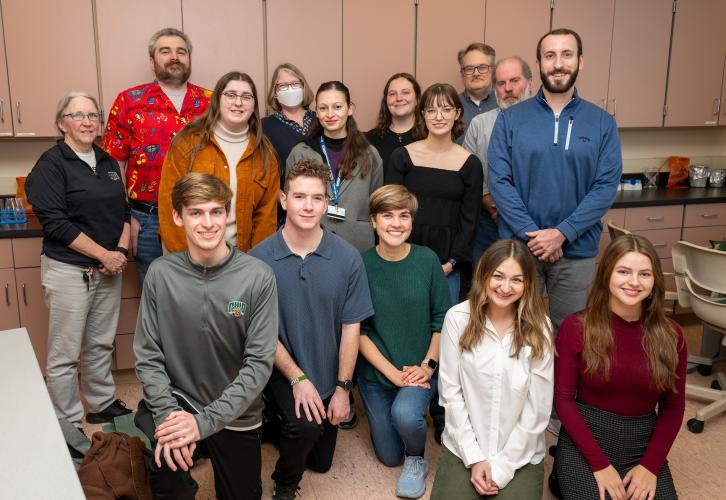
OHIO research project selected for International Space Station

A research project designed by a group of Ohio University students will soon be traveling to the International Space Station (ISS).
During the fall semester, OHIO students from across the University had the opportunity to design projects and write proposals for the Student Spaceflight Experiment Program’s Mission 18 to the ISS.
Under the leadership of Sarah Wyatt, professor of environmental and plant biology in the College of Arts and Sciences, over 34 undergraduates worked in teams with graduate students serving as facilitators throughout the fall semester preparing projects to be judged for the National Center for Earth and Space Science Education (NCESSE) program.
Each of the 10 teams wrote a proposal that went to an internal review team for the selection of the three finalists. The finalists’ proposals were then sent to NCESSE for selection of the final experiment to fly.
The finalists were the teams of:
- Michael Lane, Nathan Smith and Victoria Swiler, with facilitator Nick Whitticar
- Sadie Lamerson, Lindsay Robertson, Cierra Willis and Emily Skipworth, with facilitator Alexia Tasoula
- Lara Fogwell, Cat Gavin and Jake Magula, with facilitator Remington Burwell
Executive Vice President and Provost Elizabeth Sayrs announced that the team chosen as the winners, whose experiment will be taken to the ISS, is the team of Lane, Smith and Swiler.
“This was an incredible experiential learning opportunity for the students who participated,” Sayrs said. “I was very impressed with our students’ innovative research projects and I’m looking forward to seeing how the winning project progresses.”
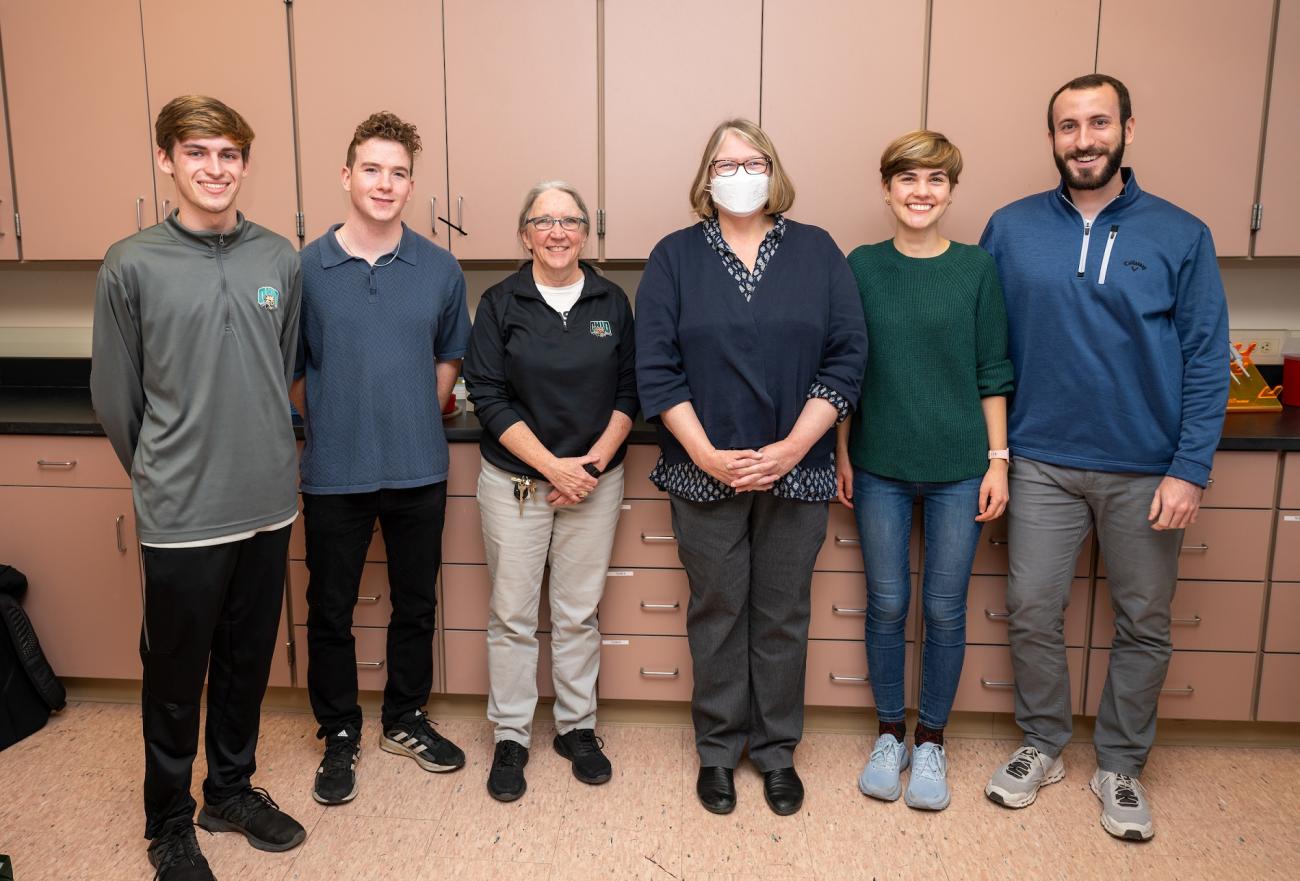
Michael Lane, Nathan Smith and Victoria Swiler discuss their research project
Lane, Smith and Swiler’s project focused on whether the bacteria Sphingomonas sanguinis would promote resilience to microgravity in the model plant Arabidopsis thaliana.
The students said they learned a great deal as part of the program, and that they enjoyed the opportunity.
“My favorite part of the experience was getting to learn about new aspects of space research I hadn’t considered before,” Swiler said. “I am really interested in the topic we proposed and taking the time to learn about it fascinated me and helped prepare me for my career in research.”
Swiler, who is from Maumee, Ohio, is an Honor Tutorial College student majoring in environmental plant and biology.
“My highlight working on this project has been the opportunity to do my own experiment and work with a team on things that I have never done before,” Michael Lane said.
Smith, a biological sciences pre-professional major from Centerville, Ohio, explained that the program was a great opportunity to learn more about microbiology and much more.
“Coming in without knowing too much about microbiology, I gained a deeper understanding of plant genes and their functions. I also was able to grow as a team player and how to work with others to achieve a larger goal,” Smith said.
Lane, who is from Hamilton, Ohio, is also a biological sciences preprofessional major.
“My highlight working on this project has been the opportunity to do my own experiment and work with a team on things that I have never done before,” Lane said. “I am really enjoying the novel opportunity that was given to us to conduct science in any way we want.”
Now that their project has been selected for the Student Spaceflight Experiments Program (SSEP) – the students will continue their research through spring semester to refine the protocols and prepare materials for handover and flight. Once the material returns from flight, the OHIO students will collect data and determine whether their hypothesis is correct.
In addition, any team can continue their research to refine protocols or use the available clinostats to assess their hypotheses using simulated microgravity. All students will also have the opportunity to write up their research findings and submit a manuscript for publication.
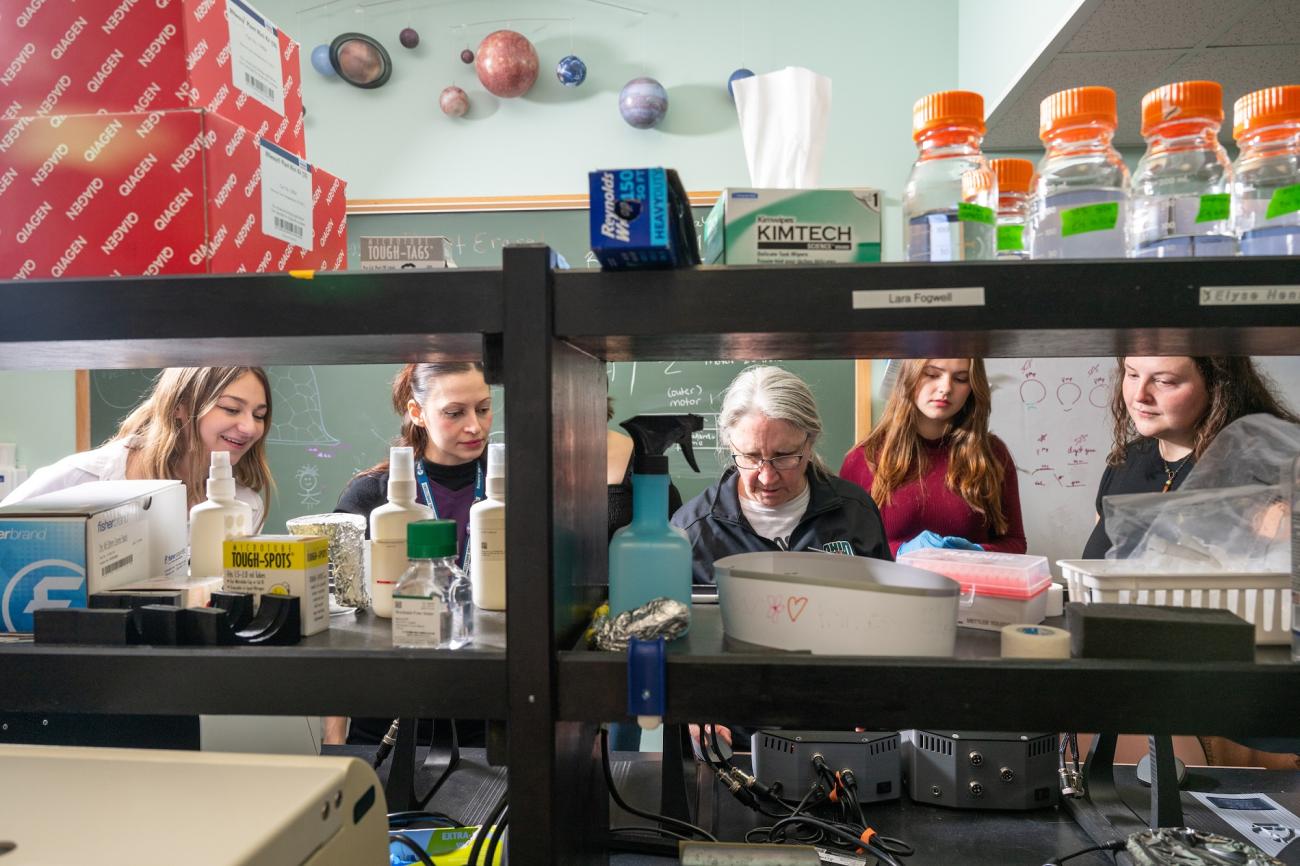
Semifinalist teams enjoyed the research program, are proud of their achievements
The team of Lamerson, Robertson, Willis and Skipworth conducted research on microgreen germination in microgravity conditions and analyzed the plants for vitamin E content. The team was mentored by Ali.
Lamerson, who is from Waverly, Ohio, is a student at Ohio University Chillicothe who is currently undecided on a major.
“I am so grateful that the Student Spaceflight Experiments Program has provided me with the opportunity to conduct research and propose solutions for the day-to-day issues of space exploration,” Lamerson said. “Working with Lindsay, Cierra, and Emily throughout the course of this project has been both enjoyable and educational. We could not be more excited for further study into the nutritional possibilities for astronauts during space travel and the future of our project!”
“I am so grateful that the Student Spaceflight Experiments Program has provided me with the opportunity to conduct research and propose solutions for the day-to-day issues of space exploration,” Sadie Lamerson said.
Skipworth, who is a film major from Franklin Furnace, Ohio, was grateful for the opportunity to be a part of the program.
“I've always loved space and science, and though I didn't end up pursuing either as my major, I'm still fascinated by it all. This opportunity has given me a chance to explore what could've been, and I'm immensely grateful for it,” Skipworth said.
Willis, who is studying environmental science and sustainability, is from Grafton, Ohio.
“SSEP has allowed me to discover my passion for scientific research while providing me with the tools to gain valuable knowledge and skills essential to the scientific process,” Willis said. “This project has highlighted the importance of teamwork and leadership in a professional setting, and I have thoroughly enjoyed the opportunity to collaborate with my peers and faculty on this project.”
Robertson, who is from Athens, Ohio, is studying applied plant biology.
“I joined this project thinking it was an amazing opportunity, but not knowing if I had the skillset for it,” Robertson said. “To be a part of the experimental design and writing process, and have our experiment considered as a semi-finalist was so incredibly validating. I think my greatest takeaway from this project was the confidence to take up space (and hopefully send up some radish seeds) in my field.”
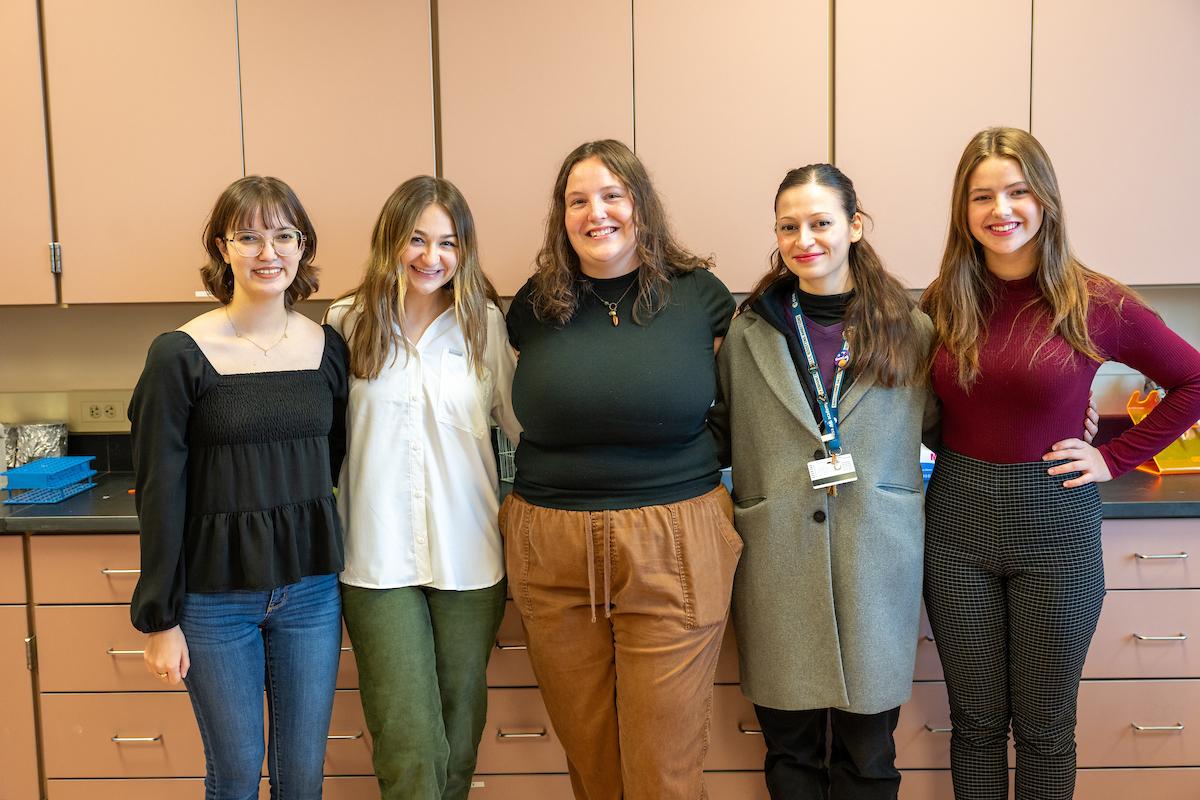
“It is remarkable that as undergraduates, we got the opportunity to design an experiment which could actually fly on the International Space Station,” Cat Gavin said
The team of Fogwell, Gavin and Magula conducted research to investigate the effects of spaceflight on Lemna minor’s (duckweed) germination, and how the species could grow and adapt in microgravity in a limited, enclosed space.
Magula, who is from Lima, Ohio, is studying environmental and plant biology.
“The highlight of my experience with SSEP was working with my groupmates on the designing our experiment. Although the task was difficult, we had an enormous amount of fun designing it,” Magula said. “Our group became great friends during the process and worked very well together.”
Gavin, who is from Cincinnati, Ohio, is studying environmental and plant biology in the Honors Tutorial College.
“It is remarkable that as undergraduates, we got the opportunity to design an experiment which could actually fly on the International Space Station,” Gavin said. “I am proud to say the first research proposal I ever wrote was for space. I had the best teammates and we had a blast working together this semester.”
Fogwell, who is from Strongsville, Ohio, is majoring in chemical engineering.
“For me, the highlight of this project was diving into a subject that I wasn't previously involved in,” Fogwell said. “Helping to design an experiment involving plants with little background knowledge was daunting, but with time and help from my team, I learned a lot and discovered a new interest that I hope to keep expanding on.”
Wyatt is proud of the semifinalists and all of the OHIO students who took part in the project during the fall semester.
“This was an amazing opportunity for the students. I was excited to see their enthusiasm,” Wyatt said. “The students all did a fantastic job. All the experiments proposed and proposals submitted were amazing, really well put together. I also really appreciated the support from the Provost’s office, the Office of the Vice President for Research and Creative Activity, the department of Environmental and Plant Biology, and the Ohio Space Grant Consortium. Without their help, we couldn’t have done this.”
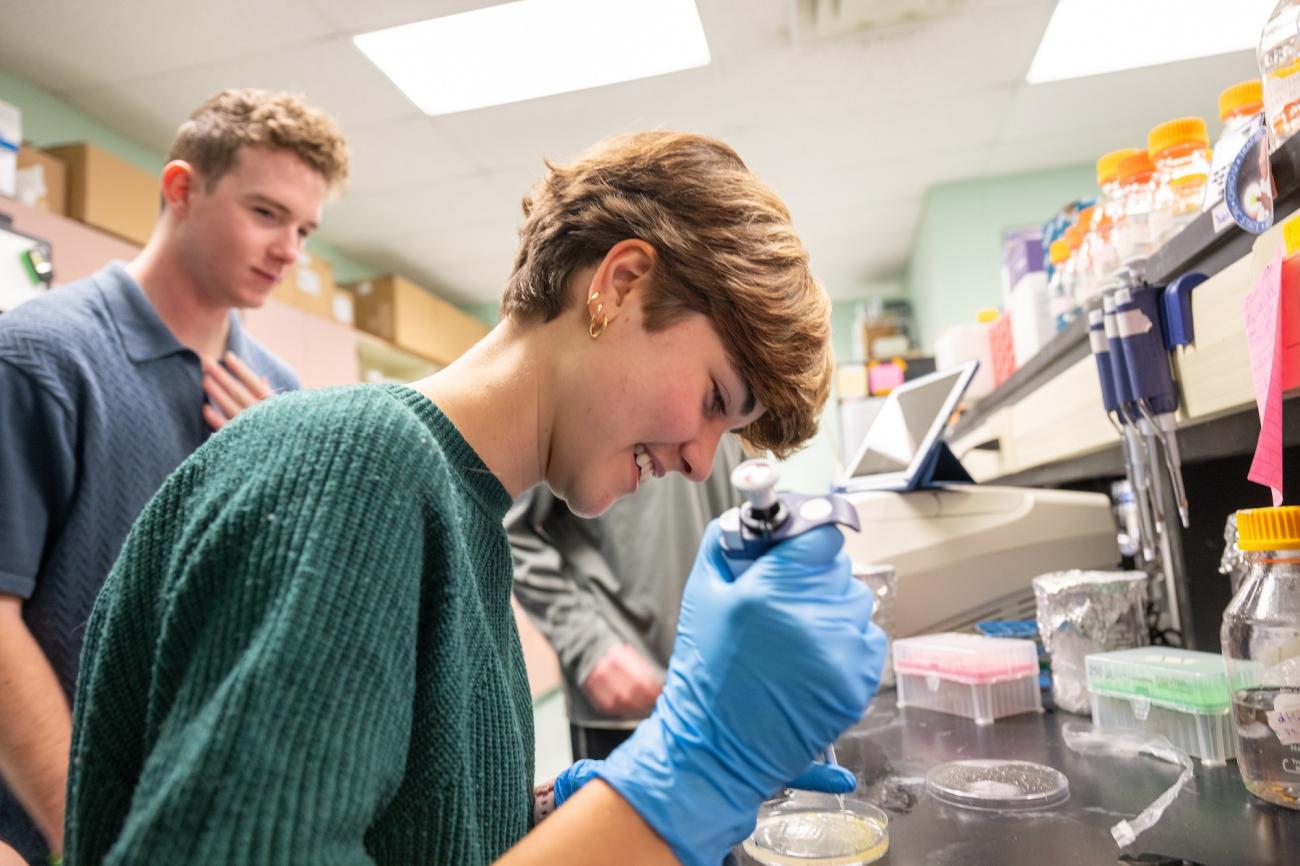
About the Student Spaceflight Experiments Program
The Student Spaceflight Experiments Program is a program of the National Center for Earth and Space Science Education (NCESSE) in the U.S. and the Arthur C. Clarke Institute for Space Education Internationally. It is enabled through a strategic partnership with Nanoracks, LLC, which is working with NASA under a Space Act Agreement as part of the utilization of the International Space Station as a National Laboratory.
SSEP uses a commercial spaceflight payload, which will contain the SSEP student experiments and which will be placed aboard ferry vehicles for transfer to the International Space Station. SSEP is a self-funded effort, with funding coming from school districts, foundations, non-profit funding organizations, and private sector businesses.
Ohio University's Office of the Executive Vice President and Provost is providing funding for the space flight. Additional funding is being raised for supplies and travel.
In addition to Wyatt as director of the project, faculty include deputy director Nathaniel Szewczyk, the Foundation Ralph S. Licklider, D.O. Endowed Professor in Molecular Medicine in the Heritage College of Osteopathic Medicine, and faculty and staff mentors Nathan Weyand, associate professor of biological sciences and director of molecular and cellular biology in the College of Arts and Sciences; Chad Mourning, assistant professor of electrical engineering and computer science in the Russ College of Engineering and Technology; Danielle Dani, professor of teacher education and interim associate dean of research and graduate studies in the Patton College of Education and Tara Griffitts, assistant director, Community Standards and Student Responsibility.
